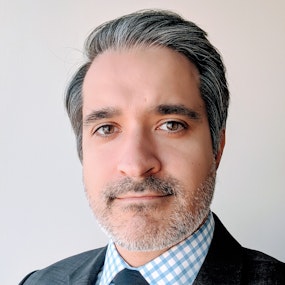JANSON SILVERS:
This is the award-winning Public Health Review Morning Edition for Tuesday, May 7, 2024. I'm Janson Silvers. Now, today's news from the Association of State and Territorial Health Officials.
OMAR KHALID:
American Nurses Foundation will be previewing their new Stress and Burnout Prevention Program curriculum. And ASTHO will participate to talk about our work around trauma informed leadership and organizational competencies to reduce and prevent burnout.
SILVERS:
ASTHO's Omar Khalid tells us about the American Nurses Foundation's upcoming webinar called Break Free from Burnout, which is part of the organization's Nurse Week 2024 offerings.
KHALID:
When leadership and organizations are aware of what their workforce is going through. And they're approaching workforce demands and the role of the nurse or the public health worker as a whole person. They feel more supported, they can be more engaged, and more likely to give everything they have at work.
SILVERS:
Khalid is looking forward to ASTHO's trauma-informed leadership contributions to the webinar.
KHALID:
And essentially, it's just approaching people with care to cultivate safety and trust. We know it's effective when caring for patients. So when you're working with nurses and you know other parts of the public health workforce, that have expressed signs of burnout and PTSD and trauma, we want to employ the same approach as a best leadership practice.
SILVERS:
Khalid says nurses are a crucial part of the public health workforce. And the goal of the webinar is to take care of those who take care of others.
KHALID:
I hope that nurses are able to find tools to address their own stress and burnout but more importantly, that nurses maybe who supervise other nurses or people who work in health care or in government who employ and work with public health nurses understand that this is really an organizational and leadership responsibility and that there are specific and practical tools just in conversation and how you work with your peers.
SILVERS:
That webinar is on Thursday, May 9 at 2 p.m Eastern Time The link to sign up is in the show notes.
And Axios article details recent trends for the nursing workforce. Maya Goldman is the healthcare reporter for Axios, who pinned the story. Goldman says diversity in the field is growing.
MAYA GOLDMAN:
In 2022, about 11% of the nursing workforce identified as black up from 8% in 2018, and about 5% in 2008. So, some pretty big jumps there and Asian representation is also increasing a lot about 9% of the workforce in 2022, identifIed as Asian up from 5% in 2018.
SILVERS:
However, even with an increasingly diverse workforce, Goldman says discrimination still remains a reason for nurse burnout.
GOLDMAN:
Racism is also a big factor of burnout in nursing. And a separate 2022 survey that I found in my reporting showed that about 63% of nurses personally experienced racism at work in 2022. So it's definitely a big issue that's stressing nurses out.
SILVERS:
To attract and retain nurses in general, but especially nurses of color. Goldman says it will take some work.
GOLDMAN:
A big one is to expand financial support, so grants and scholarships, to attend school and also loan repayment programs specifically for nurses of color is a big lever that policymakers can pull. Bringing more people of color into federal health care leadership roles, and also hospital leadership roles is also important for people to be able to see themselves reflected in leadership.
SILVERS:
A link to Goldman's story is in the show notes.
Also today, if you're looking to improve healthcare access for older adults, ASTHO has a resource you'll want to see O'Keyla Cooper has more.
O'KEYLA COOPER:
The ASTHO policy statement on healthy aging and older adult health, recommends the Health in All Policies approach supporting community-based services and improving healthcare access for older adults. State and territorial health agencies are encouraged to collaborate with diverse partners to build equitable systems and address structural health determinants. Download the full policy statement by clicking the link in the show notes.
SILVERS:
Finally this morning, stay connected to all the latest public health news when you sign up for ASTHO'S Public Health Weekly email newsletter. The link is in the show notes.
That'll do it for today. We're back tomorrow morning with more ASTHO news and information. I'm Janson Silvers. You're listening to the award-winning Public Health Review Morning Edition. Have a great day.






